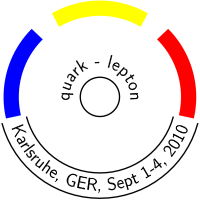Speaker
Mr
Jürgen Winter
(TU München)
Description
The 100t fiducial volume liquid-scintillator experiment Borexino, located at the Laboratori Nazionali del Gran Sasso, is far more than an observatory for solar neutrinos. Its extremely low energy threshold of about 50 keV due to its unprecedented radiopurity also enable to conduct other analyses, i.e. the search for geo-neutrinos, the investigation of the Pauli exclusion principle in Carbon-12 and cosmogenic backgrounds.
Geo-neutrinos, i.e. electron anti-neutrinos, are produced in beta-decay chains of U and Th, and in the beta-decay of K-40 abundant in Earth's mantle and crust. They are a unique probe for the interior of the Earth and allow to check geological models. Borexino is the first experiment to observe geo-neutrinos at more than 3 sigma C.L. at a rate of 3.9+1.6−1.3(+5.8−3.2) events/(100 ton yr) [1].
Moreover, the Pauli exclusion principle (PEP) has been tested for nucleons in Carbon-12 [2]. Namely, the non-Paulian transition of 1P3/2-shell nucleons to the filled 1S1/2 shell, emitting γ,n,p,or β±, has been investigated. Due to the extremely low background and the large mass of the Borexino detector, most stringent up-to-date experimental bounds on PEP violating transitions of nucleons could be established.
Despite a shielding of about 3800 m.w.e., the residual cosmic muon flux still is a major issue for low background experiments. In fact, these muons can produce neutrons and radionuclides in the detector, forming the so-called cosmogenic background. Both rates and lateral distribution around the muon track can be analysed in Borexino.
[1] G. Bellini et al.,Physics Letters B 687 (2010) 299–304
[2] G. Bellini et al.,Phys. Rev.C 81, 034317 (2010)
Authors
Mr
Jürgen Winter
(TU München)
Dr
Michael Wurm
(TU München)
